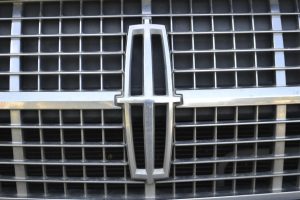
The powerful engine in your Lincoln generates a great deal of heat. Without an effective cooling system, your engine will quickly get too hot and break down. The radiator serves the vital function of cooling the system’s coolant fluid, so it needs to be kept in tip-top shape. If you notice any of the following 4 signs of radiator trouble, it might be time to visit your local Lincoln dealer for radiator repair.
Climbing Temperature Gauge
Every Lincoln has a temperature gauge on the dashboard. The dial in this gauge should usually always be hovering around midway between too hot and too cold. If you notice it begins to creep higher, then there’s almost certainly something wrong with your cooling system. This might be as simple as low levels of coolant, but it might also be some fault with your radiator.
Rusting Radiator
Your radiator is highly susceptible to rust over time because it’s made of metal. In fact, any prolonged exposure to moisture will inevitably cause some rusting. This occurs more often in damp and cold climates. If your car is left unused and outdoors for long periods, moisture will often begin to get in, and without the engine heating up regularly to steam the moisture away, rust will rear its ugly head.
Rusting might also be caused by liquid leaking from the radiator itself, or from the radiator hose. Any build-up of rust can eventually impede the radiator’s effectiveness. It can also be an indicator of some other problem. So it shouldn’t be ignored.
Leaking Coolant Fluid
If you notice any brightly-colored, sweet-smelling liquid pooling under your car, it’s most likely a coolant leak. This leak could be from a crack or faulty connection in your radiator or hose. Any such leak needs to be found and fixed as quickly as possible before fluid levels drop too low and your engine begins to overheat, which is when really significant damage begins.
Maintaining Proper Coolant Levels
Careful Lincoln maintenance requires regularly checking all of your fluid levels. Make sure this includes checking your coolant fluid. You can do this by waiting until the engine has cooled down, then you find the coolant reservoir in your engine bay. On the side of this semi-transparent plastic container, you’ll see a mark for “min” and “max” fluid levels, and the liquid level inside will be visible. If it’s ever surprisingly low, get it topped up pronto.
Overheating Engine
The clearest sign of radiator trouble is white steam pouring from your hood while driving, indicating the engine is overheating. If you see this, pull over immediately and allow the engine to cool. A technician will need to identify and fix the problem. If you keep driving with a non-functioning cooling system, pistons could begin to melt inside and fuse with the combustion chambers, destroying the entire engine.
How Your Lincoln Dealer Checks Your Radiator
A good mechanic will check your coolant levels, and examine your radiator and your entire cooling system for any sign of leaks, rust, corrosion, or cracks. They’ll run a pressure test on your radiator cap, and they’ll also test your thermostat and fan.
If you’d like certified professionals to check your radiator, visit Bob Maxey Lincoln, a trusted local dealership where we take as much pride in our customer service as we do in our vehicles.
Image by F. Muhammad from Pixabay





